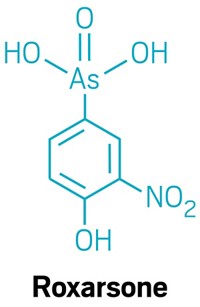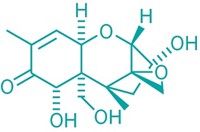Advertisement
Grab your lab coat. Let's get started
Welcome!
Welcome!
Create an account below to get 6 C&EN articles per month, receive newsletters and more - all free.
It seems this is your first time logging in online. Please enter the following information to continue.
As an ACS member you automatically get access to this site. All we need is few more details to create your reading experience.
Not you? Sign in with a different account.
Not you? Sign in with a different account.
ERROR 1
ERROR 1
ERROR 2
ERROR 2
ERROR 2
ERROR 2
ERROR 2
Password and Confirm password must match.
If you have an ACS member number, please enter it here so we can link this account to your membership. (optional)
ERROR 2
ACS values your privacy. By submitting your information, you are gaining access to C&EN and subscribing to our weekly newsletter. We use the information you provide to make your reading experience better, and we will never sell your data to third party members.
Environment
Arsenic poultry feed additive may be more problematic than believed
Roxarsone metabolites have been identified in chicken liver even following the safety period after the birds have stopped consuming the supplement
by Bethany Halford
May 15, 2017
| A version of this story appeared in
Volume 95, Issue 20
The arsenic-containing feed additive roxarsone was used for more than 60 years to promote weight gain and to prevent parasitic infections in poultry and swine before its use was halted in Europe and North America because of concerns of exposure to cancer-causing arsenic metabolites. But the additive is still used in Asia. Researchers led by the University of Alberta’s X. Chris Le and Wuhan University’s Bin Hu were interested in identifying and assessing arsenic-containing metabolites that people who eat roxarsone-fed poultry may be exposed to. They conducted a study of 1,600 chickens that ate either standard chicken feed or feed containing roxarsone. The researchers then sampled the birds’ livers for arsenic-containing metabolites. Previously, they reported eight of these metabolites in chickens that consumed roxarsone. Now, they have identified three others, all of which are methylated phenylarsenical metabolites (Angew. Chem. Int. Ed. 2017, DOI: 10.1002/anie.201700736). The metabolites were found in chicken livers even five days after roxarsone supplementation had been halted—a typical preslaughter safety window used by the poultry industry for the additive to clear—raising concerns about human exposure to the potentially toxic metabolites if the chicken livers are consumed.





Join the conversation
Contact the reporter
Submit a Letter to the Editor for publication
Engage with us on Twitter